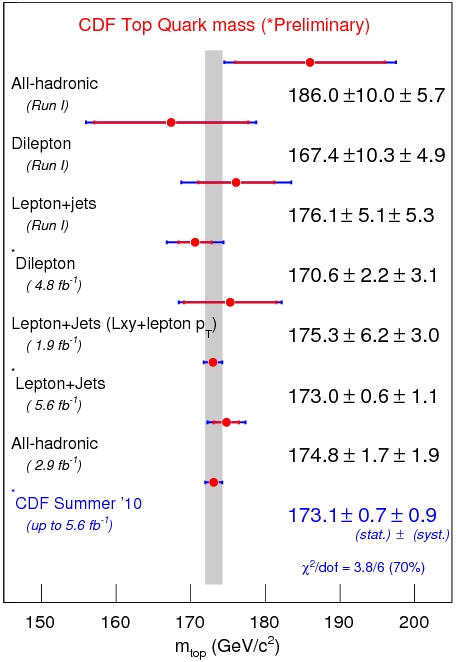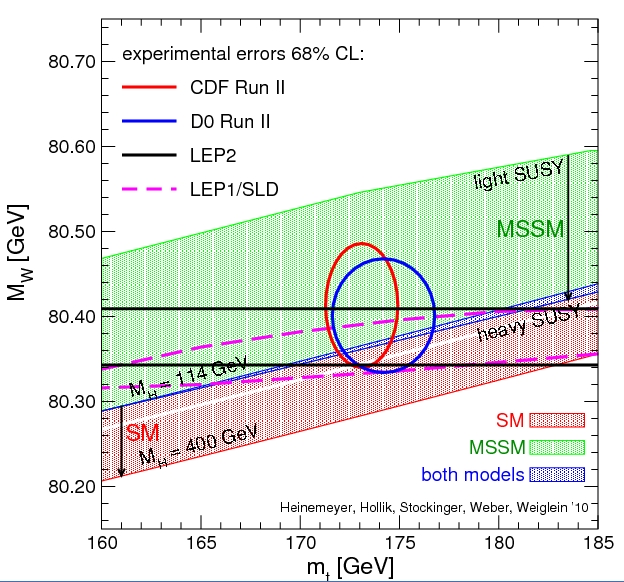Have a look at the various measurements that enter the calculation in the graph below.

I will never get tired by mentioning that the top mass is astonishingly close to the original measurement performed in 1994 by CDF, at a time when the top quark had not even yet been officially "discovered" (CDF by then had only about 3-sigma evidence for that particle, but from just 7 top-pair events could determine the top mass to be 174 GeV, with a ten-gevish uncertainty). The measurement back then was tremendously accurate already, if we reckon that today's result, which has a 0.75% uncertainty, is still laying less than one-sigma away!
The other important thing to note is that new information on the top quark mass can be used in the typical "find the Higgs" plot which combines all experimental determinations of W boson and top quark mass, together with indirect measurements of electroweak observables.
Since the unknown value of the Higgs boson mass depends on W and top masses, the plot allows one to "zoom into" the Higgs mass by using the constantly increasing precision of the mass measurements coming from the Tevatron these days.
Of course, this is just a visualization exercise: global electroweak fits will need to be run, to provide a better understanding of the most likely values of a Standard Model Higgs mass. But in the meantime, it is useful to have a look. While we wait for DZERO to update their own result, the status of things is shown by the figure below, which is a courtesy of Sven Heinemeyer.

Some very brief explanation is in order. The red ellipse is the CDF measurement of top quark and W boson masses (note that the ellipse includes 68% of the probability for the measurements: by being an ellipse rather than a band, it extends further away on each axis than would a band.) The blue ellipse is DZERO's measurement of the two quantities. The black lines frame the 1-sigma uncertainty in the LEP II measurements of the W mass (four experiments combined). The pink oval instead shows the indirect information on W and top masses that can be inferred by the LEP measurements of electroweak observables. Finally, theoretical models are shown in red (SM) and green (MSSM). Note that as the Higgs mass becomes heavier in the SM, the W mass should be lighter for a given top mass: this is shown by the black arrow pointing down.
Further details: the white band within the SM area is the 163-166 GeV exclusion provided by the Tevatron searches. For the MSSM, the place where to sit in the large green band depends on the unknown value of the hypothetical supersymmetric particles.
As you can see, the experimental determinations still allow one to draw whatever conclusion: is the Higgs more "SM-like" or more "MSSM-like", according to the W and top particles ? I leave the matter to you, the comments thread is open to host your wildest speculations!



Comments